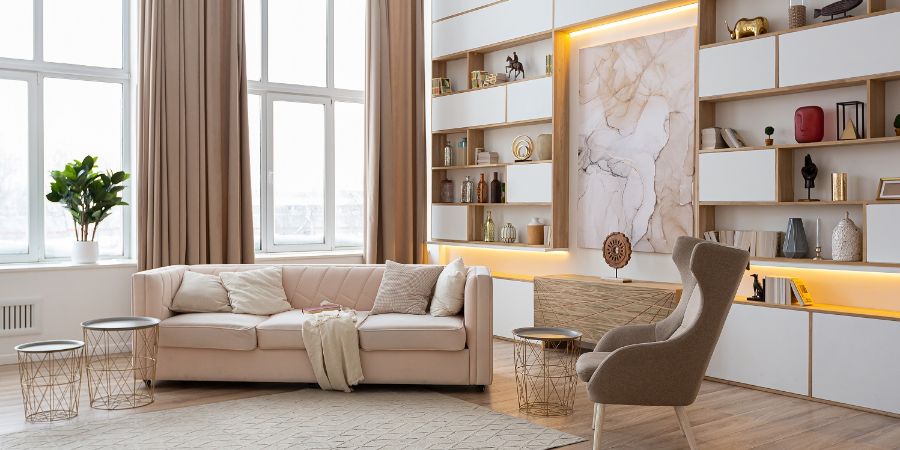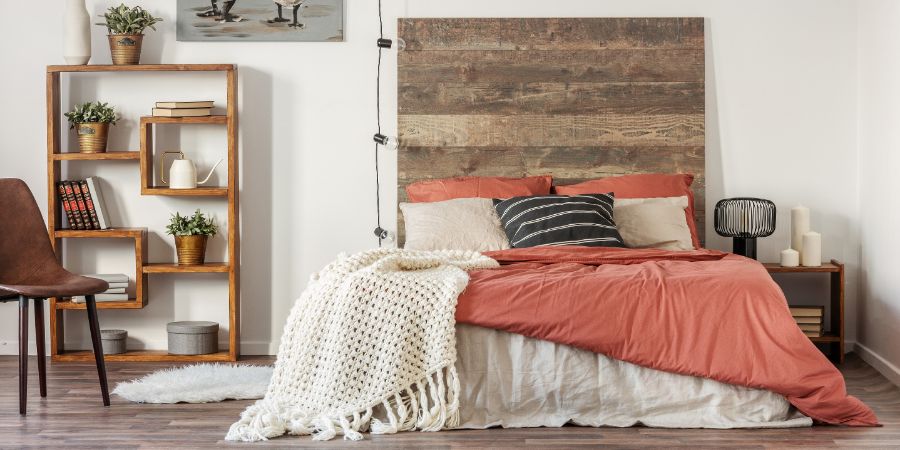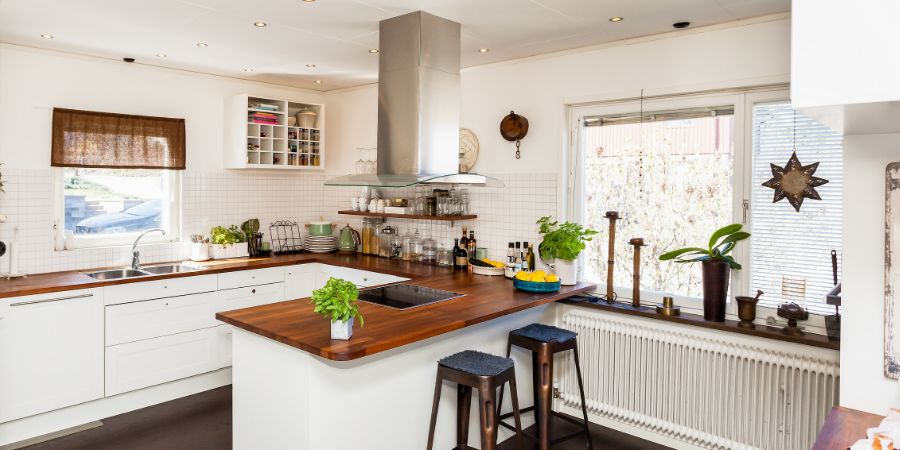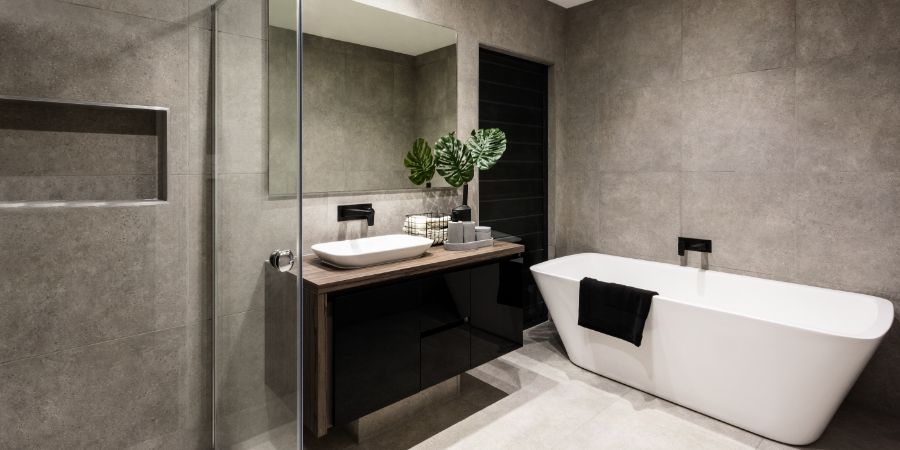As a designer, you want to help your clients as much as possible when it comes to their home design project. This includes assisting them with their budget – which can be difficult for some clients to define and stay within. In this article, we’ll discuss 13 efficient budgeting tips to help clients define their budget – and then stay within it.
As an added bonus, we’ll also discuss 5 additional tips to help YOU maximize whatever spending limit your client has given you for their design project. Utilizing these tips will help both you and your client have a successful outcome!
So, let’s see what these budgeting tips are!

13 Budgeting Tips To Help Clients with Their Design Project
1. Create a budget together (if they don’t have a number already).
This can help ensure that everyone is on the same page and avoids any surprise costs along the way. To help your client create their budget from scratch, it can be useful to divide their budget into different categories (e.g. furniture, decor, labor).
Here are some additional tips to help you develop the budget with your client:
- Ask them what they can realistically afford to spend on their project
- Talk about different materials, finishes, and styles that fit within their budget
- Ask them to set aside a specific amount for any extra unforeseen costs
Still need some guidance on this part of the process? Indy offers some excellent insights – and advice – on this topic that we recommend checking out!
Looking for some budget-friendly home decor ideas? Here are 100 of the them!
2. Determine the client’s priority items first.
This will help them narrow down what they should focus on and not overspend in unnecessary areas. So, ask them which aspects of the project are most important to them and why.
3. Keep track of all costs throughout the project.
This can help your client better identify any potential overspending. From there, they can make adjustments along the way if needed.
To make this even easier, consider using an app or spreadsheet to keep track of all purchases – no matter how small – so that your client better comprehends their total budget. Some apps that can help with this task include Notion, Toggl, and Quicken.
4. Research before shopping.
By doing this, your client can compare prices and find the best deals on materials and decor items – saving them money in the long run. Also, have them keep an eye out for any sales or discounts that they may be able to take advantage of!
PRO TIP: You can also suggest any of the following places/resources to your clients as well. These are the places where professional interior decorators tend to do their shopping!
5. Reuse, repurpose, or recycle.
Encourage your clients to look into ways they can use what they already have in their home before purchasing something new – and expensive! With a little creativity (and some help from you) they may be able to come up with a unique solution that fits within their budget.
Here’s an example: let’s say that your client’s goal is to update their living room. Instead of buying a brand-new sofa, suggest that they try recovering the existing one with new fabric – or even just reupholstering it in a different color/pattern!
If you need some inspiration, here are 8 practical ways to reuse household items for decor, courtesy of SIMPLE HOME | SIMPLE LIFE.
6. Prioritize quality over quantity.
It’s important to let your client know that when it comes to materials, finishes, and decor items – buying quality pieces rather than cheaper (but lower-quality) alternatives can save them money in the long run.
For example, if your client is on a tight budget but still wants a luxurious look for their space, suggest investing in one or two high-end pieces (e.g. an armchair or rug) while keeping the rest of the decor more affordable.

7. Set up a contingency fund for emergencies.
No matter how detailed your client’s budget is, it’s always a good idea to set aside some extra money in case of any unexpected costs. For instance, if they end up needing to purchase a larger piece of furniture than originally planned, or if any parts need to be replaced. This fund helps your client feel secure knowing that they have some funds available if an emergency arises.
As a good rule of thumb, advise clients to put aside 5-10% of their total budget for this contingency fund.
8. Find ways to save money on labor.
One way your client can save money on their project is to find ways to cut down labor costs. For example, suggest that they do as much of the work (e.g. painting, wallpapering) themselves as possible. Afterwards, they can then hire professional help for the more complicated tasks like plumbing and electrical work.
9. Look into DIY projects and thrift stores.
Encourage your client to look into DIY projects for their home design project as this can help them save a lot of money. For instance, they could build their own bookshelf or kitchen island!
Also, remind them to check out thrift stores and second-hand shops for furniture and decor items. These places can be a great resource for finding affordable, one-of-a-kind pieces that add character to any room!
PRO TIP: These 6 DIY IKEA furniture hacks will be a GAME-CHANGER for you and your client!
10. Review their budget regularly.
As you and your client progress through the project timeline, make sure to review their budget regularly to ensure that they are staying within the limit that they have set for themselves.
By doing this, you can make adjustments and shifts to their spending if needed – and help them stay on track to reach their project goals.
11. Make sure your client understands the importance of sticking to their budget.
Another thing to keep in mind is that your client needs to understand why sticking to their budget is so critical. So, remind them that it’s in their best interest to stay within their limit – as going over budget can cause them to go into debt or compromise the quality of their home design project.
12. Outline both the short and long-term goals.
When setting a budget for your client’s home design project, make sure to outline both their short and long-term goals. For example, a short-term goal may be to purchase new furniture for the living room. A long-term goal, on the other hand, may be to add more storage space in their bedroom.
By helping your client clearly define their goals, you can help them create a budget that works for their project – and helps them stay on track to achieving it.
13. Maintain accountability.
Finally, remind your clients to stay accountable and stick to the budget that you have both agreed upon. Doing this can help ensure that their home design project is a success – and that they stay within their spending limit. And if you notice that your client is heading down the path of going over budget, it’s your job to step in and help them course-correct!

Budgeting Tips for Clients: Increasing or Decreasing The Limit
At some point during the home design project, your client may decide they want to change their budget amount.
If they want to increase it, it’s important for you to encourage them to consider why this may be necessary. Remind them that increasing their budget could lead to unexpected costs or even go beyond what their home is worth. So, make sure they have a good reason and can afford the additional cost.
On the other hand, if your client wants to decrease their budget, help them identify which items in their project are non-negotiable and should stay even if the budget is reduced. Then, prioritize the other elements that could be adjusted or eliminated to make up for the cost difference.
By helping your client make these decisions, you can ensure that they get the best outcomes from their home design project – without going over budget (whatever that budget may be).
5 Extra Tips To Help You, The Designer, Manage a Budget
1. Research materials and suppliers.
Do your research and compare different material and supplier prices to get the best deal for your client’s home design project. By doing this, you can ensure that you are maximizing their budget – without sacrificing on quality!
2. Keep track of ALL expenses incurred throughout the project.
Make sure to keep detailed records of all expenses incurred throughout the entire project. This helps you ensure that your client is not overspending – and that they stay within their budget.
3. Suggest alternative design options when possible.
When creating a home design project for your client, suggest alternative design options to them when possible. This helps them get the best outcome that fits their budget – and lets you maximize whatever spending limit they have given you.
4. Don’t tiptoe around the honest truth.
Sometimes, clients may have unrealistic expectations when it comes to their budget. As a professional designer, it’s your responsibility to be honest and realistic with them about what their budget can and cannot accommodate.
5. Don’t be afraid to ask for a larger budget.
If your client’s home design project requires a larger budget, don’t be afraid to ask for it. Let your client know that the additional funds are necessary to achieve the best outcomes for their project. There’s always a chance that they may be willing to increase their budget if they truly believe in the importance of your design!
And if they can’t and/or the money simply isn’t there?
Don’t be afraid to say no if the project is simply out of their budget. That said, there are plenty of ways to get creative and find alternative ways to make their dream home design a reality.
We totally understand that you don’t want to turn paying customers away. So, worst case scenario, if their projects demands more money than they can currently afford, you can always (gently) suggest that they come back to you when they do have a larger budget in the future.
Not yet a certified, professional designer? Become one in as little as 3 short months with the help of QC Design School’s self-paced, online training courses!

Ways To Help Clients with Budgeting: FAQs
Q: What should you do if your client goes over budget?
A: If your client goes over budget, it’s important to review the additional costs with them ASAP. Help them figure out what needs to be cut to bring them back on track. This way, you can avoid any unnecessary stress that comes with overspending!
Q: What if a client can’t afford the project they have in mind?
A: If a client can’t afford the project they have in mind, be honest and realistic with them about what their budget can and cannot accommodate. You can also suggest alternative design options or creative ways to make their dream home a reality without going over budget.
Q: What are some budgeting tips to help clients who only have one income?
A: For clients who only have one income, it’s important to emphasize the importance of creating a realistic budget. Encourage them to calculate their monthly income, expenses, utility bills and other debts before they start setting aside money for their home design project.
Additionally, suggest that they make sure to have an emergency fund in place to help cover any unexpected costs that may come up. Finally, make sure they are aware of the payment plans available to them so they can spread out their payments over time and pay for the project in smaller increments.
Q: What are some good budgeting tips if your client has little to no money?
A: If your client has little to no money, suggest that they begin by creating a budget. Encourage them to think about what their needs and wants are for their home design project – and then prioritize accordingly.
Furthermore, you can suggest ways for them to save money on the project such as buying pre-owned furniture or materials, using coupons or discounts, or even doing a DIY project. What’s more, you can also encourage them to take advantage of any tax credits or rebates available to assist with the project costs.
Q: What are the 12 steps for making a budget for beginners?
A: The 12 steps for making a budget for beginners are:
- Calculate your total income
- Record your expenses
- Track where each dollar is going
- Subtract your expenses from your income
- Set realistic goals for spending and saving
- Consider creating an emergency fund
- Make a monthly budget and stick to it
- Use budgeting apps or services
- Pay off debt as quickly as possible
- Review your progress regularly
- Find ways to save money and cut back on expenses
- 12. Give yourself some breathing room for unexpected expenses
Q: What should you do if your client is preventing you from keeping a project on budget?
A: If your client is preventing you from staying within the project budget, it’s important to have an open and honest conversation with them. Explain why certain things need to be cut or reduced in order for the project to stay on track – and then suggest alternatives that can still achieve the same result without a significant increase in cost. This way, you can help your client make informed decisions while still ensuring that the project stays within their budget.
Q: What are some ways the client can increase their budget?
A: If your client is looking for ways to increase their budget, suggest that they look into options such as getting a loan, asking family or friends to help out, or reducing expenses in other areas of their life. You can also suggest ways for them to make money on the side such as taking on side jobs or selling unwanted items. In addition, they may be able to find additional funds through grants or scholarships targeted at home design projects.
Q: What are some ways the client can shrink their budget?
A: If your client is looking to shrink their budget, you can suggest that they look into ways to reduce costs such as doing research on the best deals, using coupons or discounts, and shopping around for the best prices. You can also suggest that they look into buying used furniture or materials to help cut costs.
Additionally, doing some DIY projects themselves or hiring a contractor instead of an interior designer can also help them save money on their home design project. Lastly, you may also want to suggest that they look into options such as tax credits or rebates that can be used to help offset the cost of their project.

Wrapping It Up
Now that we’ve gone over 10 budgeting tips to help clients define their budget and then stay within it, as well as 5 additional tips to help the designer themselves maximize whatever spending limit their client has given them for the home design project, you should have all the information you need to get started on a successful budgeting plan.
Remember to stay flexible and open to suggestions, and work with your client to ensure that their vision for the project is achieved while still keeping it within their set budget.
Good luck – and thanks for reading!


